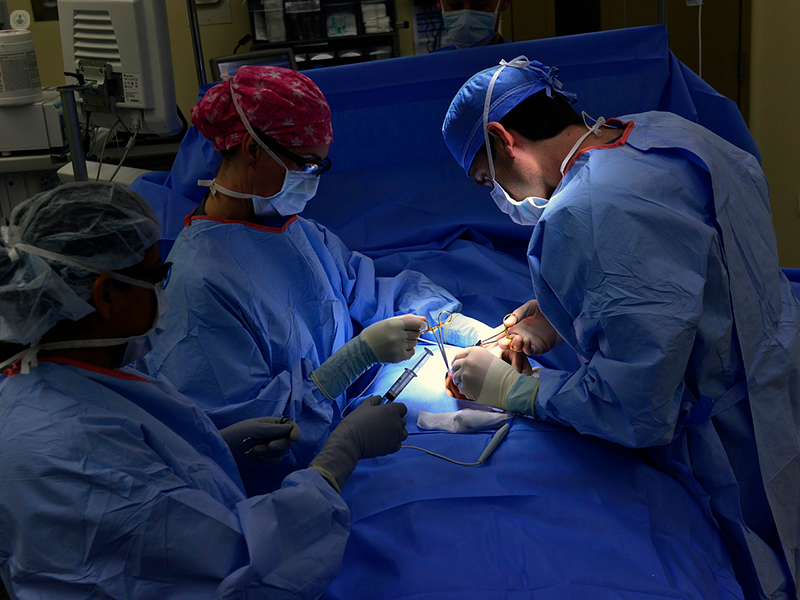


What is aortic surgery?
The aorta is the main blood vessel which carries blood from the heart to the rest of your body. The aortic valve opens and closes to allow blood to flow out of the heart. Aortic surgery involves repairing these structures to prevent internal bleeding.

When is aortic surgery performed?
Aortic surgery is performed to treat a number of conditions which cause aortic disease. Aortic disease is a problem with the aorta or aortic valve which causes one or both of them to dilate (known as an aneurysm) or split (known as dissection). This increases the chance of a rupture, which can be fatal.
Aortic disease can be:
- Genetic – conditions such as Marfan Syndrome affect the connective tissue and in turn cause problems all over the body, including aortic aneurysm.
- Congenital – you might have a heart defect that is present at birth
- Acquired – conditions such as high blood pressure, tumours, or atherosclerosis can damage the aorta and aortic valve
What does aortic surgery involve?
There are several types of aortic surgery:
- Aortic valve repair – this involves improving the function of the valve or repairing holes so that it doesn’t leak
- Aortic valve replacement – this involves replacing the aortic valve with a new one. The new valve can be made from metal, from animal tissues, or donated by someone else.
- Aortic root replacement – this involves replacing the aortic valve and aorta.
Aortic surgery is complex – but techniques have advanced significantly over the last 20 years. Now, in addition to open surgery, it is possible to conduct the surgery in with minimally-invasive techniques, making the smallest possible incisions in the chest and using instruments like and endoscope to guide surgeons. Robot-assisted surgery involves using a computer to display 3-D images while the surgeon navigates the valve.
The length of your stay in hospital and the risks involve depend on the surgical technique used:
- Open surgery can take a few hours and might involve staying in hospital for a period of 5-10 days. Risks can include bleeding, infection, heart attack, stroke, and lung complications.
- Endoscopic surgery is generally a faster procedure, and the risk of blood loss and other complications is lower. You are likely to only stay in hospital for 1-2 days, and experience less pain and scarring afterwards. However, this type of surgery is much more difficult to perform.
What does recovery look like?
This depends on the surgical procedure involved, your existing health, and your age. Generally, endoscopic surgery involves a shorter recovery period than open surgery, where it can take between one and two months to return to your normal daily activities.